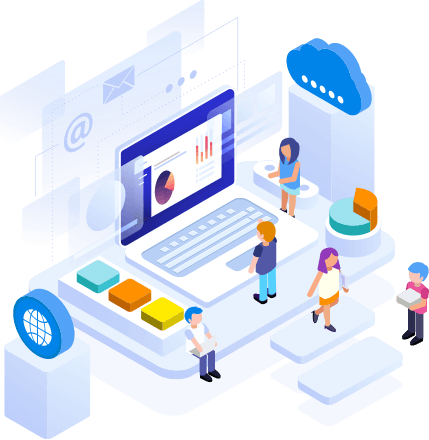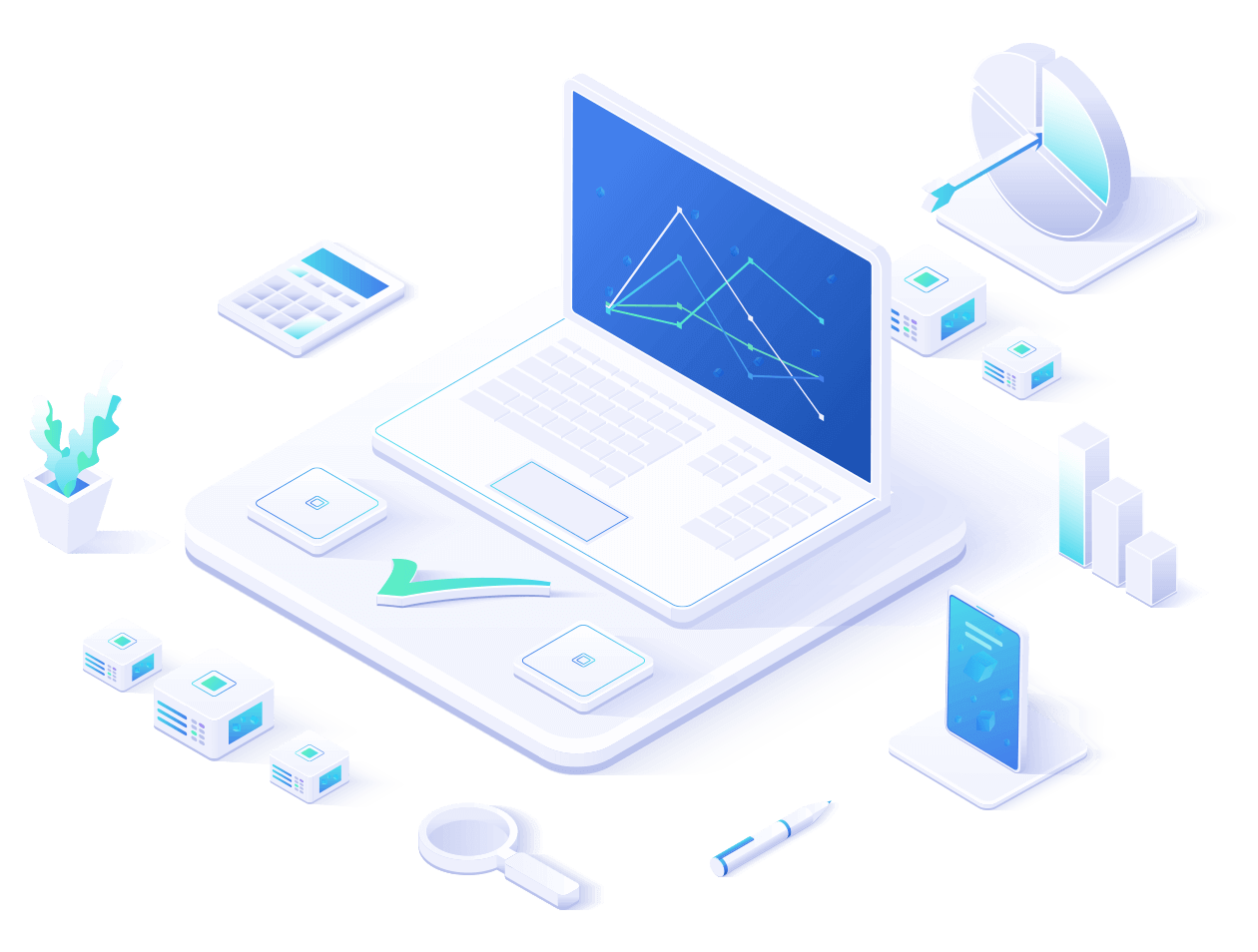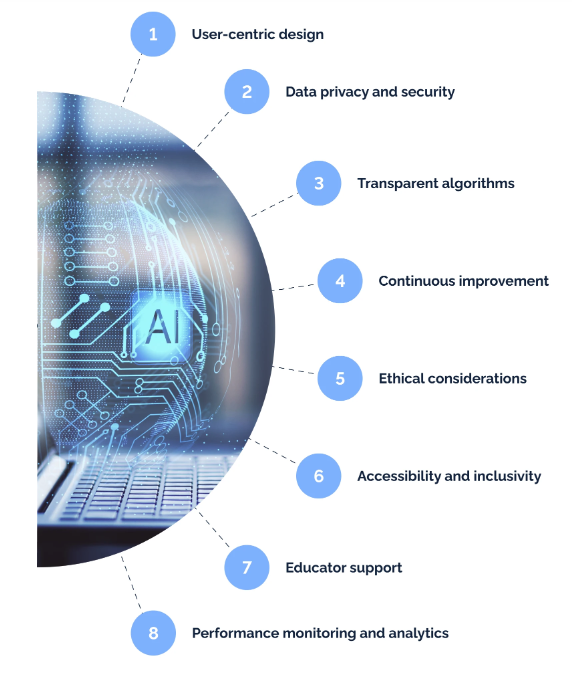- ABOUT US
- SERVICES
Data Science
Immersive Solutions (VR/AR/MR)

- SOLUTIONS
Health Care App
Delivery App
Real Estate App
Edu Tech App


- CAREERS
- CONTACT US


Learning management systems are a potent way to enhance the education process. The rise of artificial intelligence is a perfect opportunity to update many practices in modern education. LMS technologies are likely to become one of the first elements that will change with the appearance of the innovation in question. An AI LMS makes learning easier for students and removes many tedious tasks for the average teacher. In this article, we review the essence of AI-based LMS and then outline some of the key benefits of such innovation for the users. As you’ll see, LMS with AI is among the most promising innovations for the modern education field.

Before we discuss the benefits of the technology or its differences/similarities in comparison to traditional LMSs, it’s essential to define AI LMS. So, what’s an AI-based LMS? An AI-based LMS, or Artificial Intelligence-based Learning Management System, is a software platform that helps people learn and manage their educational materials with the assistance of artificial intelligence technology. In short, this term stands for the integration of AI in LMS. How do such technologies work? An average AI-centric LMS uses smart algorithms and machine learning to provide personalized learning experiences, such as adaptive content recommendations, automated assessments, and intelligent feedback. The AI analyzes user behavior, preferences, and performance to optimize learning. Why is this important? Such an approach makes learning more efficient and tailored to individual needs. In this regard, we can compare an AI to a personal teaching assistant. Instead of employing a real person for this goal, however, you can use AI to make all the key recommendations for the relevant students. LMS with AI is a perfect opportunity to improve the learning process for everyone at a low price.

4. Increased generation of unique content
Education requires a lot of content: one has to offer new texts and practical tasks for the learners during every lesson. All these aspects create tremendous pressure for many teachers. It isn’t enough to use the solutions provided on the market. A good teacher creates their content because they have to target the unique needs of the learners. AI tools can help with this goal. These instruments offer unique tasks for the learners, saving a lot of time for the teachers. Increased content generation makes the learning process much more flexible.
5. Learning personalization
A big aspect of AI-centric LMSs is the ability to personalize the learning process. It’s possible to create solutions that target the unique needs of the learners. How exactly does this work? For instance, an AI-based LMS can decide the complexity of the tasks via the learner’s performance. If a person progresses with some tasks fast, the tool will offer them harder problems. One can also register the interests of the users via such a framework. An AI can offer some further learning recommendations, helping with the choice of profession. Non-AI systems also do this (especially with human input). Nonetheless, AIs are much more efficient at delivering high-quality recommendations.
6. Automatic review of the student performance
The analysis of student performance is a significant time sink. For example, one sometimes has to spend hours checking the relevant tests. Dave Speck, an expert at education-centric TES magazine, notes that teachers spend up to 44 days a year assessing the students. AI solves this problem once and for all. It can check tests and even more complex tasks without major human input. This means that a teacher gets an opportunity to spend more time preparing some high-quality teaching materials. The ability of AI to check the student information independently is also crucial from the standpoint of preventing bias. An automatic system has no preferences: it’s impartial regarding all aspects of human personality.
1. Real-time assistance for teachers
Many negative tendencies in the learning process start with minor problems. In fact, challenges with understanding even one concept quickly derail the ability of a student to learn some material later on. For instance, the knowledge of tenses in English is essential for many other topics (such as Conditionals). If you miss this information, learning further is difficult and often impossible. Real-time assistance for teachers via AI tools solves the presented problem. An AI tool immediately notes if a person has issues understanding some concepts. Using this information, the teachers can decide what aspects of learning to target and what individual needs the students have. With the appearance of such tools, we finally possess a reliable instrument for preventing students from falling behind.
2. Simplifying the language of instruction
Many teachers enter the education field after studying or starting a career in some other sector. A common pathway is to specialize in a ‘practical’ field such as English language or programming and then transition towards a Master’s degree in education. This approach sometimes creates a major problem for the relevant specialists: they’re competent in their field but don’t know how to explain concepts in simple language. AI offers an opportunity to solve this problem once and for all. Modern language models can explain many concepts in a straightforward learner-oriented way. This means it’s possible to create custom tasks and even texts explaining theoretical information that consider the learners’ skills.
3. Improved content accessibility
AI LMS improves content accessibility by employing various features. It can utilize speech recognition technology to convert text into spoken words. This is important for making various learning opportunities accessible to visually impaired individuals. Furthermore, AI can generate alternative formats, such as braille or large print. This means that the technology in question can cater to the needs of learners with specific disabilities. Besides, AI-based LMS can also use language translation capabilities to provide content in multiple languages. In this way, the learners who aren’t fluent in the original language may access material from other countries. Why is this important? An AI-powered LMS greatly increases the accessibility of education in developing countries. AI is notable for its ability to work with even the most obscure languages (as long as there are enough texts to build a neural network) because it goes beyond statistical analysis to translate. In this way, many impoverished minority communities across the globe will get an opportunity to access courses from the top educational facilities. For example, experts in machine translation note that it improves foreign language learning by giving the learners a tool that can, for example, double-check their understanding of particular passages in texts or grammar in writing.
User-centric design
The first thing you need to do is prioritize the needs and preferences of the learners when developing the AI-powered features of the learning management system (LMS). Ensuring an intuitive and personalized learning experience is key to long-term user loyalty. Learning is a process that takes a lot of time. You must ensure that the time users spend on your platform is as comfortable as possible.
Data privacy and security
Education systems tend to have rather limited information on the learners. Nonetheless, some sensitive information enters these systems, too, creating a source of potential danger for the users. What should you do to solve this problem? We believe it’s a good idea to implement robust measures to protect user data, including encryption, access controls, and compliance with data protection regulations. Only this approach can help you build trust and maintain confidentiality in the AI-driven LMS.
Transparent algorithms
There’s a major challenge for many AI systems: they can potentially reflect the biases of their creators. Bugs and illogical decisions may also stem from the analysis of human discourse, which is usually crucial for such systems. To solve this problem, we believe you should ensure transparency in AI algorithms used in the LMS by providing clear explanations of how the system makes recommendations or assessments. A system that assesses the learners on the basis of obscure principles can quickly turn into a source of major stress for them. For many people, this is a major ‘red flag’ that can destroy the reputation of an app.
Continuous improvement
No matter how much you invest into refining the first release, it’ll encounter some negative user feedback once it hits the market. This outcome is natural. Sometimes, product developers can’t predict who’ll truly like their software. In this light, you should regularly update and refine the AI algorithms and models based on user feedback, learning outcomes, and emerging technologies. This approach will help you adapt to the inevitable mismatch between market analysis and market reality.
Ethical considerations
As we’ve already mentioned, AIs can reflect the biases of their creators. This can happen either by design or due to the analysis of human texts. What’s the key thing to do at this stage? We believe you should embed ethical guidelines into the development process to prevent biases, discrimination, and unethical practices in the AI algorithms. Will this help remove all bias-related problems? No, but active interventions can minimize their likelihood.

Educator support
AI systems are quite user-friendly these days, but they nonetheless require at least some expertise to function well. For example, there’s now a major market around ChatGPT prompt creation, with many paid courses appearing on the market. Udemy already features paid courses for so-called prompt engineering. While younger teachers may be capable of understanding AI systems without major outside assistance, the older ones may have problems with them. This means that leaving those people without assistance is irresponsible. What’s your key goal here? We believe you should provide adequate training and resources to educators on effectively utilizing the AI-powered features of the LMS. Only this approach can enable them to leverage the technology to enhance teaching strategies and support learner engagement and success.
Performance monitoring and analytics
A major advantage of all computer-based systems is that they allow the processing of a tremendous amount of information. All AI-powered LMSs should capitalize on those factors and give students and teachers as many insights into their learning habits and behaviors as possible. We believe that the best practice is to incorporate robust analytics capabilities into the AI-driven LMS to track learner progress, identify areas of improvement, and provide data-driven insights.
Accessibility and inclusivity
Out of 331 million people in the U.S., 54 million have some disabilities. Creating accessible design, in this case, is a reasonable step from the business standpoint. After all, a lack of accessibility can lead to you losing 16% of the market share. In this regard, the best practice to consider is simple: design the AI features of the LMS to be accessible to learners with disabilities, ensuring compatibility with assistive technologies and adherence to accessibility standards.